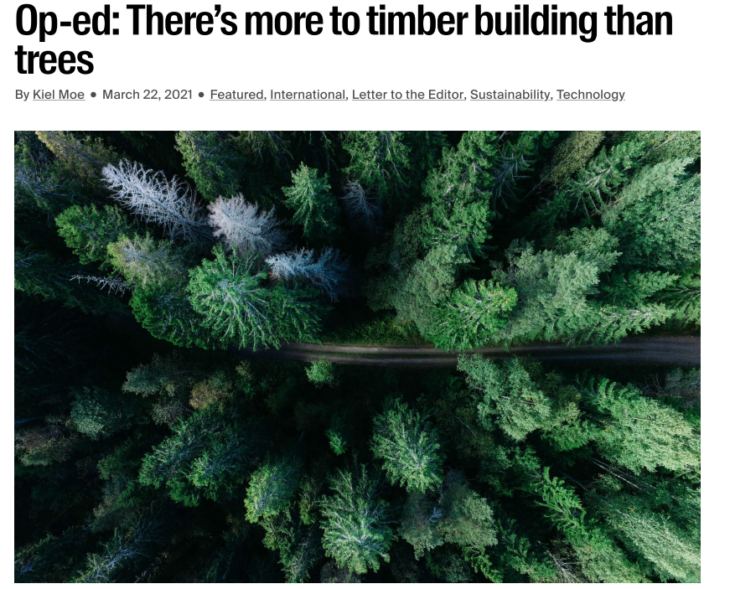‘In such a definition , mass timber buldings are another type of carbon pool in the carbon cycles of forest; a cache of carbon like that burried in forest soil or woody litter on the forest floor.In this regard, masss timber building , like any type of construcion , is a terristorial proposition.’

Opening with my favourite line from this artcile ,I think that timber buildings can be a good solution for architects but not well suited for climate change. Explaining further ,to many of us working at the intersection of forest conservation and architetcure there are proposals to fill our cities with tall wooden buildings presents and not a stirring vision of sustainability but a nightmarish scenario of a land base increasingly scarred by clearcuts, logging roads and small diameter tree plantations at a time when climate insists that reestablishing natural forests and letting them grow much bigger and older is one of humanity’s last best hopes to keep climate change from accelerating out of control. To save our climate we need taller trees not taller wooden buildings.
There are two key reasons for this. The first has to do with the carbon cycle and how managing forestlands for tall trees vs tall wood buildings affects atmospheric concentrations of CO2. Natural forests, allowed to grow big and tall, accumulate carbon for centuries. While some carbon is emitted through decay of dead trees, much more is caught than released , and so carbon is taken out of the atmosphere and built up on the land for a very long time. As such, using pro-forestation – letting trees attain their maximum size – will help humanity bend the curve on CO2 concentrations.The second key reason why big tall trees are preferable to tall wooden buildings has to do with the ability of our forest dependent communities to adapt to climate change.
In contrast, boosting production for massive new wood for buildings takes CO2 concentrations in the other direction. Wood buildings release carbon, they don’t store it. Wood is half carbon by weight and once cut off the stump is emitted into the atmosphere at rates that are well known but vary with species and end use. More wood products in use means more wood products emissions. It also means fewer trees on the land absorbing carbon because the short rotation timber plantations from which mass timber products are sourced are clearcut so often that nearly half of the landscape at any one time is a carbon sequestration dead zone.
A conclusion from my side approaching the issue from many directions is that landscapes dominated by clearcuts and corporate tree plantations are far less resilient to the effects of climate change. They are more susceptible to wildfires, flooding, insects, disease, wind damage, landslides and harmful algae blooms than the natural forests they’ve replaced.
CREDITS :
This Arctile and Collaborative Context is a project of IAAC, Institute for Advanced Architecture of Catalonia developed at Master in Advanced Ecological Buildings and Biocities in 2021/22 by students: Prachi Agarwal and faculty: Alex Hadley